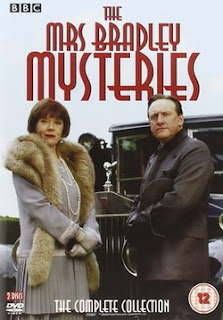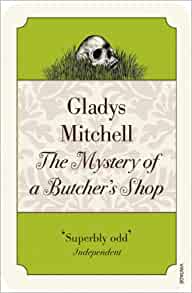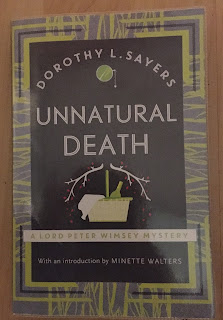First appearance by author turned sleuth Roger Sheringham
 |
| The paperback edition of The Layton Court Mystery |
His series
detective, Roger Sheringham, is one of the guests at a country house party being held at a Jacobean
mansion called Layton Court. The character, who is an author, was to feature in another ten detective novels
and many short stories by Berkeley.
The party is being hosted by Victor Stanworth, a genial and hospitable man, aged
about 60, who has taken Layton Court for the summer to enable him to entertain
his friends in style.
At the start
of the book, Sheringham has been enjoying Stanworth’s generous hospitality for
three days until the party is given the grim news during breakfast that their
host appeared to have locked himself in the library and shot himself.
Sheringham
is not convinced that his host has committed suicide and sets out to
investigate the mystery himself, using his friend, Alec Grierson, who is also
in the party, as his ‘Watson’.
Anthony
Berkeley was just one of the pen names used by Anthony Berkeley Cox, who died
51 years ago today (9 March 1971). He also wrote novels under the names Francis
Iles and A. Monmouth Platts.
Anthony
Berkeley Cox helped found the Detection Club in 1930, along with Agatha
Christie and Dorothy L Sayers. It was to become an elite dining club for
British mystery writers, which met in London, under the presidency of G. K.
Chesterton. There was an initiation ritual and an oath had to be sworn by new
members promising not to rely on Divine Revelation, Feminine Intuition, Mumbo
Jumbo, Jiggery Pokery, Coincidence or Act of God in their work.
 |
| Berkeley Cox wrote 19 crime novels before returning to journalism |
I found The
Layton Court Mystery unexciting and stilted at the beginning, but the writing improved
a lot as the book progressed.
I thought Roger
Sheringham had the potential to be a good character, although some of the rather
fatuous dialogue at the beginning reminded me of Lord Peter Wimsey at the
start of Whose Body? the first novel by
Dorothy L Sayers that he appeared in.
Sheringham
sometimes tells Grierson what detectives in books would do in particular
circumstances, showing that the character, like his creator Berkeley, is a
devotee of the genre.
The amateur
detective jumps to a few wrong conclusions along the way and
follows up each of his theories until he accepts that they are disproved. He
tells the other characters that he is asking questions because he has ‘natural
curiosity’, to cover up the fact he is interrogating people he doesn’t really
know, which was not considered good form at the time.
He sometimes
says he is looking for material for his next novel and one of the characters
actually says to him: ‘Everything’s “copy” to you, you mean?’
He also
finds clues, such as a footprint, a hair, a piece of a broken vase and a trace
of face powder, to help him work out what has taken place in the library.
 |
| The Poisoned Chocolates Case sold more than a million copies |
He wrote 19
crime novels between 1925 and 1939 before returning to journalism and writing
for the Daily Telegraph and the Sunday Times. From 1950 to 1970, the year
before he died, he contributed to the Manchester Guardian, later, the Guardian
newspaper.
Berkeley’s
amateur detective, Sheringham, had his most famous outing in The Poisoned
Chocolates Case, which was published in 1929. The novel received rapturous
reviews and sold more than one million copies. It is now regarded as a classic
of the Golden Age of detective fiction.
At times, The
Layton Court Mystery reminded me of Trent’s Last Case by E C Bentley, published in 1913, which was
originally intended to be a skit on the detective story genre. Like Trent,
Sheringham doesn’t actually solve the case until the real murderer confesses to
him right at the end.
However, by
the end of The Layton Court Mystery, I had taken to Roger Sheringham and I now look
forward to reading the next book in the series.
The Layton Court Mystery was first published in London by Herbert Jenkins in 1925 and in New York by Doubleday, Doran and Company in 1929. It was republished by Spitfire Publications Ltd in 2021.
Anthony Berkeley's books are available from and












